 W
WAcroteuthis is a genus of belemnite from the early Cretaceous of Asia, Europe, and North America.
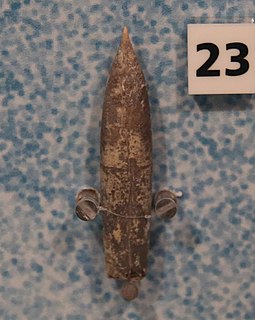 W
WActinocamax is a genus of belemnite, an extinct group of cephalopods.
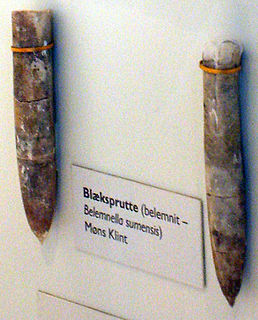 W
WBelemnella is a genus of belemnite, an extinct group of cephalopods.
 W
WBelemnellocamax is a genus of belemnite, an extinct group of cephalopods.
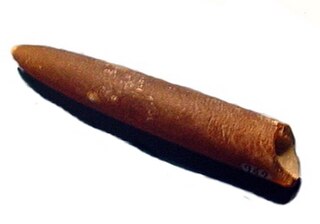 W
WBelemnitella is a genus of belemnite from the Late Cretaceous of Europe and North America. Belemnitella was a squidlike animal, probably related to the ancestors of modern squids and cuttlefish. The shell was internal. The rostrum or guard is found the most often and possesses a distinctive slit at its ventral surface and a ridge on the dorsal surface. The phragmocone has a small protoconch at its tip, and fit into the cavity and the guard. It also had septa and a ventral siphuncle within the phragmocone, projecting forward as a beak-like blade.
 W
WBelemnites is a genus of an extinct group of cephalopods belonging to the order Belemnitida. These cephalopods existed in the Early Jurassic period from the Hettangian age to the Toarcian age (175.6–183.0). They were fast-moving nektonic carnivores.
 W
WBelemnopsis is a genus of belemnite, an extinct group of cephalopods.
 W
WDimitobelus is a genus of belemnite, an extinct group of cephalopods.
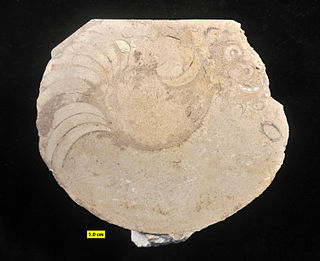 W
WGoldringia is an extinct nautilid of the Rutoceratidae family that lived during the Middle Devonian. It is known from New York, Ohio, and Indiana in the United States.
 W
WGomphoceras is a questionable nautiloid cephalopod genus assigned to the Oncocerida. The family to which it might belong is undetermined.
 W
WHastites is a genus of belemnite, an extinct group of cephalopods.
 W
WHibolites is a genus of belemnite, an extinct group of cephalopods.
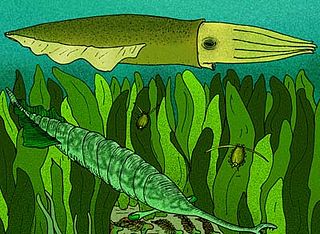 W
WJeletzkya douglassae is a fossil coleoid from the early Pennsylvanian Mazon Creek lagerstätten and represents the earliest known crown-group squid. Non-mineralized anatomy is preserved and comprises ten hooked tentacles and a radula.
 W
WLeptoteuthis is a monospecific genus of cephalopod known primarily from gladii, with soft parts often preserved in the German Solnholfen limestone.
 W
WMuensterella is a fossil stem-octopod known from a handful of specimens from German Solnhofen plattenkalk.
 W
WNectocotis rusmithi is an Ordovician nectocaridid, differing from Nectocaris in the possession of an internal skeletal element.
 W
WNeohibolites is a genus of belemnite, an extinct group of cephalopods.
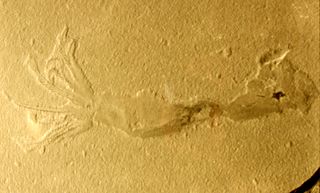 W
WOstenoteuthidae is an extinct family of cephalopods from Lower Jurassic of Italy. They had ten arms with unusual structure.
 W
WPachyteuthis is a genus of belemnite that lived from the Early Jurassic to the Early Cretaceous, and has been found in Asia, Europe and North America. The type species is P. densus.
 W
WPassaloteuthis is a genus of belemnite, an extinct group of cephalopods. Belemnites are typically known for having about 40 micro-hooks on each one of its appendage. However, Passaloteuthis is notable for being associated with a pair of mega-hooks known as onychites. These hooks are tentatively interpreted as male-specific features, though their exact function is still unknown.
 W
WPhragmoteuthis is a genus of extinct coleoid cephalopod known from the late Triassic to the lower Jurassic. Its soft tissue has been preserved; some specimens contain intact ink sacs, and others, gills. It had an internal phragmocone and ten arms.
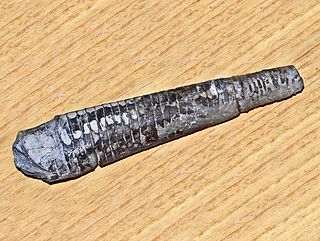 W
WTreptoceras is a fossil cephalopod genus included in the orthocerid family Proteoceratidae.
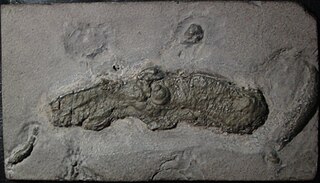 W
WVampyronassa rhodanica is an extinct vampyromorph cephalopod known from around 20 fossils from the Lower Callovian of La Voulte-sur-Rhône, Ardèche, France.
 W
WYoungibelus is a genus of belemnite, an extinct group of cephalopods.